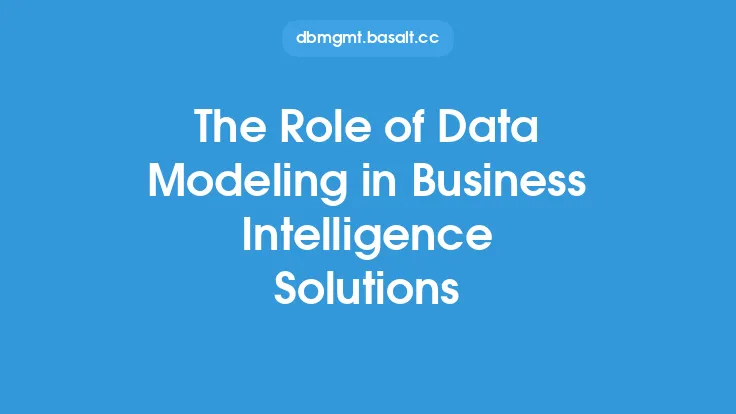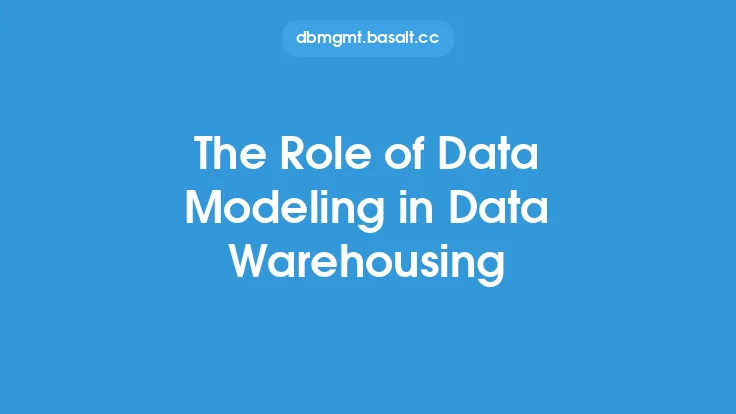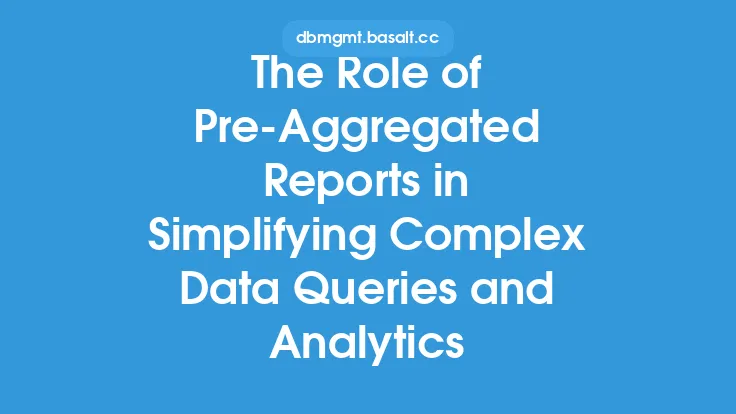Data modeling is a crucial aspect of big data analytics, as it enables organizations to make sense of the vast amounts of data they collect and store. Big data analytics involves the analysis of large, complex datasets to extract insights and patterns that can inform business decisions. Data modeling plays a key role in this process, as it provides a framework for organizing and structuring data in a way that makes it accessible and usable for analysis.
Introduction to Data Modeling for Big Data
Data modeling for big data involves the creation of a conceptual representation of the data, including its structure, relationships, and constraints. This representation is used to define the schema of the data, which is the blueprint for how the data is organized and stored. A well-designed data model is essential for big data analytics, as it enables organizations to efficiently store, process, and analyze large datasets. Data modeling for big data involves a range of activities, including data discovery, data profiling, and data transformation.
The Importance of Data Modeling in Big Data Analytics
Data modeling is important in big data analytics for several reasons. Firstly, it enables organizations to extract insights and patterns from large datasets. By creating a conceptual representation of the data, organizations can identify relationships and trends that may not be immediately apparent. Secondly, data modeling helps to ensure data quality, which is critical for big data analytics. Poor data quality can lead to inaccurate insights and decisions, which can have serious consequences for organizations. Finally, data modeling enables organizations to scale their big data analytics capabilities, as it provides a framework for handling large volumes of data.
Data Modeling Techniques for Big Data
There are several data modeling techniques that are commonly used in big data analytics, including entity-relationship modeling, object-oriented modeling, and dimensional modeling. Entity-relationship modeling is a technique that involves creating a conceptual representation of the data, including its entities, attributes, and relationships. Object-oriented modeling is a technique that involves creating a model of the data using objects and classes. Dimensional modeling is a technique that involves creating a model of the data using facts and dimensions. Each of these techniques has its own strengths and weaknesses, and the choice of technique will depend on the specific requirements of the organization.
Data Modeling Tools for Big Data
There are several data modeling tools that are commonly used in big data analytics, including data modeling software, data governance tools, and data quality tools. Data modeling software provides a range of features and functions for creating, editing, and managing data models. Data governance tools provide a range of features and functions for managing data quality, security, and compliance. Data quality tools provide a range of features and functions for ensuring data accuracy, completeness, and consistency. Some popular data modeling tools for big data include Apache Hive, Apache Cassandra, and MongoDB.
Best Practices for Data Modeling in Big Data Analytics
There are several best practices that organizations should follow when creating data models for big data analytics. Firstly, organizations should ensure that their data models are flexible and adaptable, as big data analytics involves working with large, complex datasets. Secondly, organizations should ensure that their data models are scalable, as big data analytics involves handling large volumes of data. Thirdly, organizations should ensure that their data models are well-documented, as this will help to ensure data quality and reduce errors. Finally, organizations should ensure that their data models are aligned with their business goals and objectives, as this will help to ensure that their big data analytics capabilities are delivering value to the organization.
Common Challenges in Data Modeling for Big Data
There are several common challenges that organizations face when creating data models for big data analytics. Firstly, organizations may struggle to handle the volume, variety, and velocity of big data, which can make it difficult to create a conceptual representation of the data. Secondly, organizations may struggle to ensure data quality, which is critical for big data analytics. Thirdly, organizations may struggle to scale their big data analytics capabilities, as this requires a significant amount of resources and infrastructure. Finally, organizations may struggle to align their data models with their business goals and objectives, which can make it difficult to deliver value from their big data analytics capabilities.
The Future of Data Modeling in Big Data Analytics
The future of data modeling in big data analytics is likely to involve the increased use of automation and machine learning. Automation will enable organizations to create data models more quickly and efficiently, while machine learning will enable organizations to create more accurate and effective data models. Additionally, the future of data modeling in big data analytics is likely to involve the increased use of cloud-based data modeling tools, which will provide organizations with greater flexibility and scalability. Finally, the future of data modeling in big data analytics is likely to involve the increased use of data governance and data quality tools, which will help to ensure that organizations are able to extract insights and patterns from their big data analytics capabilities.





